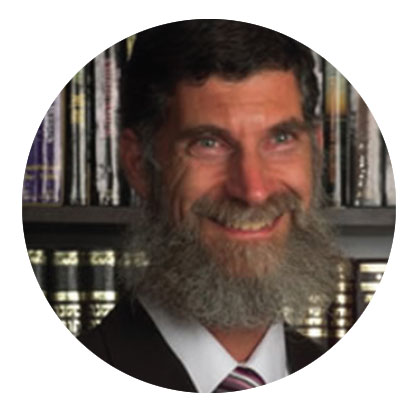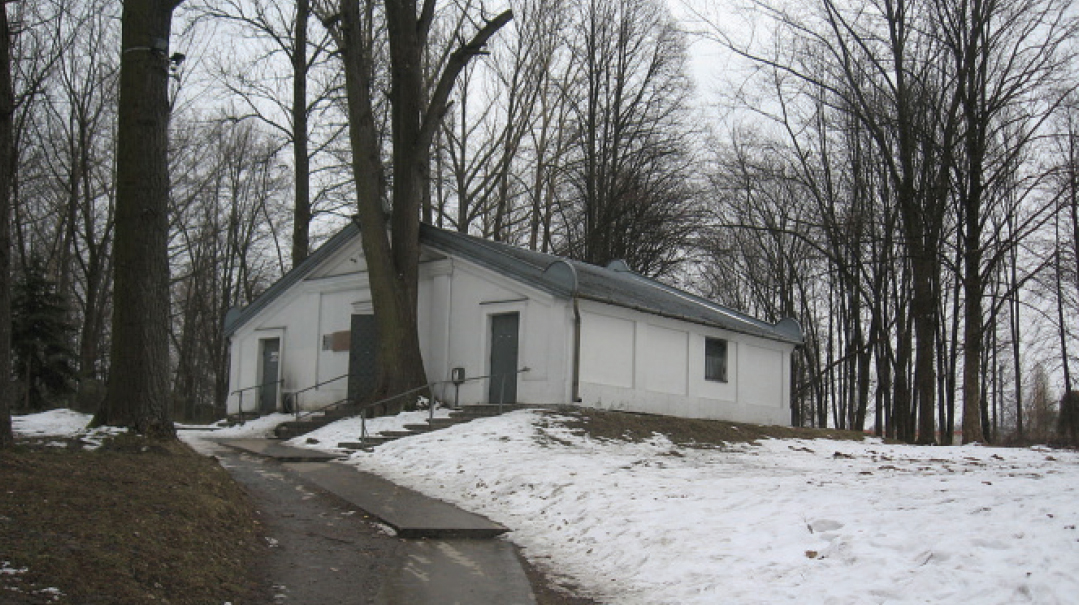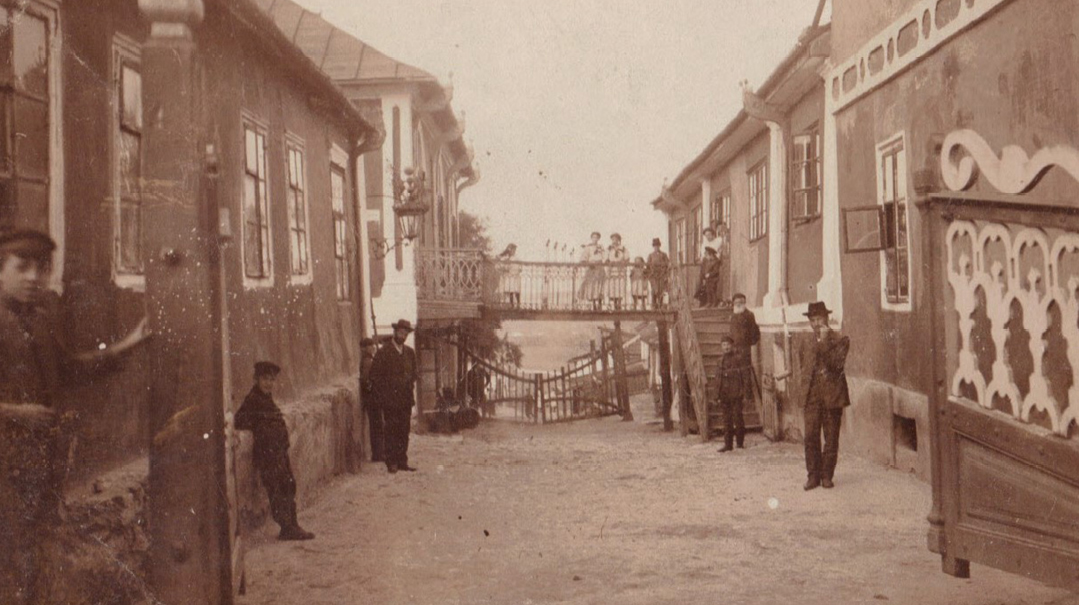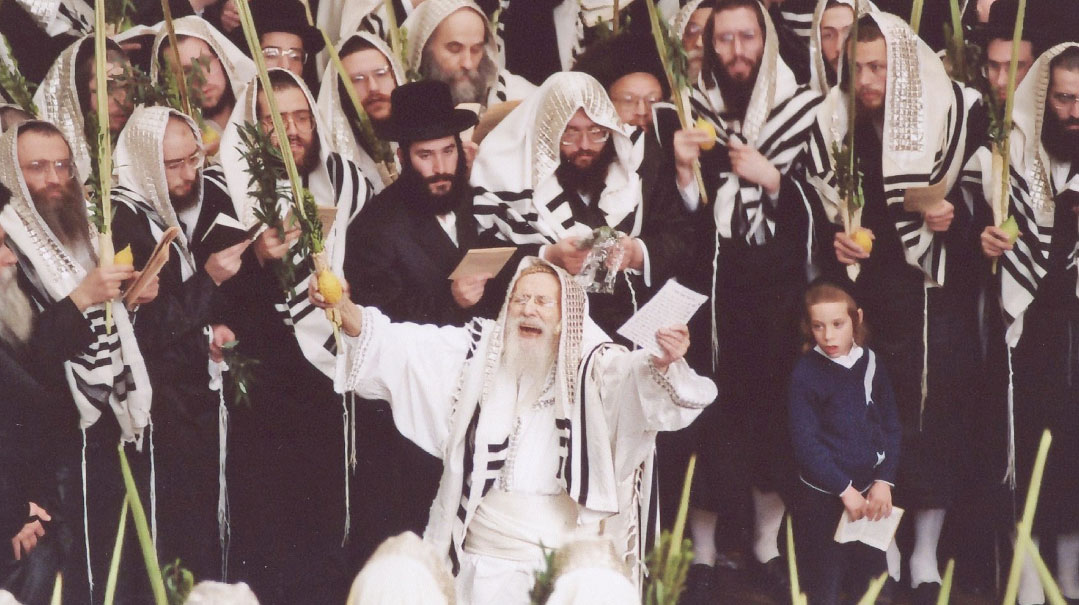The Aderabba Quest

What is the secret magnet pulling so many to Reb Elimelech of Lizhensk's resting place and legacy?

The hamlet of Lizhensk in southeastern Poland is not likely to appear on many travel sites.
Its entertainment scene consists mainly of a tavern. But on the 21st of Adar, all of uptown Lizhensk belongs to the 18th-century tzaddik Rebbe Reb Elimelech, and to the throngs from all over the world who have come to pray at his gravesite.
What is the secret magnet pulling so many to his resting place and legacy?
This year, Lizhensk will be quiet, as fear of coronavirus keeps the crowds away. But during my last visit the mob was so large, I can picture it still. What struck me aside from the myriads were the individuals.
There was a gentleman I recognized from a business meeting in London (what in the world was he doing there?), a history scholar from Philadelphia (super not his crowd), a computer guy who usually was never more than a few feet from his CPU, and a reporter from Polish TV interviewing an American seminary girl.
Something ultra out of the ordinary was going on — and that was before I even got near the ohel. Inside, whoever was not pouring their heart out in prayer was dancing. Very spirited dancing.
Were the kippot srugot leading the black-hatters, or was it the chassidim wearing the round, velvet-covered hats? My assessment was that no one was leading — but everyone was dancing and singing. Together.
I distinctly recall a skinny Israeli teenager adorned with a pancake-sized knitted kippah wearing a T-shirt and sandals (yes, in Lizhensk, in the snow) who got randomly placed in a circle between two large Brooklynite chassidim significantly his senior. They were performing a crazy dance of unity and that scene was playing itself out all over, all day.
What is it about Reb Elimelech that could forge such unity? What is it about the tzaddik known as the Noam Elimelech (after the name of his classic work) that causes tens of thousands of people to travel to a remote corner of Poland in freezing weather on his yahrtzeit? Especially considering that, at least according to the polls I have conducted, virtually no one knows anything about him. When he lived, what he accomplished — even his last name (Wajcblum, for the record). The yahrtzeit of the shevatim — buried in Israel — cannot draw a fraction of such a gathering!
The inscrutability of it all gave me no rest, despite the fact that I am an outsider to the world of chassidus. I had to find out more about this person and the role he played.
***
To understand Reb Elimelech without first comprehending the Baal Shem Tov would be akin to understanding Yaakov Avinu without prior knowledge of Avraham Avinu. To understand Avraham Avinu, you must first be aware of his times and how steeped they were in idol worship.
Before the Baal Shem Tov was revealed in 1760, Polish and Russian Jewry were downtrodden and despondent, and their religious lives were in jeopardy. Chmielnicki and his hordes were responsible for the murder of almost 100,000 Polish and Ukrainian Jews and the destruction of 300 communities in the years 1648-49. The ensuing desperation of the survivors primed many to believe the outlandish assertions of a Greek Jew named Shabbetai Tzvi, who claimed to be the messianic redeemer. But Shabbetai Tzvi was an imposter — a persuasive one with a good public relations team, but no more than a charlatan who misled an anxious and broken People. And if his deceit was not great enough, he dealt a crushing blow when he converted to Islam to avoid punishment.
This religious and emotional blow was later followed by the Tatar incursions from Crimea, the Moscow War, and the Swedish War, each one accruing more bloodshed, suffering, and destruction to the beleaguered Jews of Poland. A wave of blood libels further rocked them. Thousands were murdered, thousands were forcibly converted to Christianity and the remainder was uprooted, scattered, persecuted, and exiled.
The ability to earn sustenance just to live, let alone afford the execrable taxes and fines Polish Jewry was burdened with, was daunting. Vast numbers of professions were forbidden to Jews, leaving only a few realms of despised employment available, such as moneylending and running taverns for the local Polish landowners.
This is when Yisrael ben Eliezer, to become known as the “Baal Shem Tov,” appeared, and afforded Jewry in that region a reason to live, encouraging the masses to have simple and pure faith and to pray with intense concentration. Critical to his vision was ahavas Yisrael, allegiance to pious Torah leaders — and everything was to be done with paramount joy and a constant awareness of G-d’s presence in all facets of life.
It had previously been assumed that only a scholar familiar with all of the intricate minutiae of the law could be considered holy and close to the Almighty. Suddenly chassidim had hoisted the unschooled commoner to an equal level of closeness to G-d.
The Baal Shem Tov spent years traversing Eastern Galicia and the Carpathians in order to teach the people and service their needs. When he assumed the mantle of leadership in1748 he was no stranger to his brethren, nor were they to him. The masses flocked to him, and lives that had previously been miserable and desolate were uplifted and given purpose. The Baal Shem Tov divined holy sparks even in the darkness.
“What shall I do with my son? He is so wicked!” asked a despairing father.
“Love him all the more,” was the characteristic counsel of the master who shunned reprimands.
Focusing first on the lower classes and those who were hardest hit from the massacres and pogroms, the Baal Shem Tov built up the bitter souls with a message of love. Love for one Jew toward another, and unrestrained love for the Creator.
The Baal Shem mesmerized whomever he met. His repertoire of anecdotes, parables, metaphors, and aphorisms was endless, and he appealed to the heart as well as to the mind. He taught that masochism and self-flagellation, behavior that had been considered the path of the pious at the time, were not the way to serve the L-rd.
The Almighty could only be served in a state of happiness, he explained, and song and dance were potent aids in achieving this goal. Pessimism causes sin and spiritual apathy. Repentance that causes depression distances the Holy Presence.
The master was so imaginative and persuasive, possessed of such spirit and personality, that his movement swept through Poland, the Ukraine, and White Russia, reaching even Romania and Hungary.
***
The Baal Shem Tov did not appoint a successor, so when he passed away on Shavuos 1760, his only son, Zvi, became the leader for a full year. According to tradition, on the first yahrtzeit, the Baal Shem Tov’s son disclosed that he had had a vision of his father relating that G-d’s Holy Presence had moved from Mezhibuzh (the court of the Baal Shem Tov) to Mezritch. Then he removed his white coat and placed it on the shoulders of Rav Dov Ber of Mezritch.
Rav Dov Ber, who was popularly known as “The Maggid of Mezritch,” was a brilliant conveyor of his master’s teachings, but over time he became ill and could no longer take the message on the road, forcing those thirsty for chassidic teachings to travel to Mezritch. The Maggid was able to take men of outstanding potential and develop them into “the tzaddik” that the Baal Shem Tov had described; they became the key to the success of the chassidic movement. By the time of his death in 1772, the Maggid had attracted to Mezritch some of the most brilliant minds and extraordinary personalities of his day.
After his passing, his disciples had to decide who would succeed their master. They needed a saintly, erudite leader who could quell the mounting opposition of the misnagdim — those who saw chassidus as a threat to tradition. Their leader would also have to be someone who knew his people intimately, their afflictions and suffering. And they didn’t have to look far to find him.
Reb Elimelech was known to be one of the finest students of the Maggid M’Mezritch and he surely knew his people. Earlier, Reb Elimelech’s younger brother Rebbe Reb Zushe had coaxed him to join him on traverses of the countryside. During those exiles, they’d inspire the estranged common-folk to desist from sin and return to their holy roots. The exile would also, as the Talmud teaches, purify their souls.
Yet it is likely that Reb Zusha had an added agenda in proposing the exile. He profoundly understood his brother’s remarkable talents and spiritual capabilities — but they were still dormant potential. The situation required an individual who intimately knew his people, their afflictions, and their suffering — much as the Baal Shem Tov had spent years traversing the land in order to understand the people and their needs.
Wandering from town to village, the holy brothers were sustained solely by meager coins or scraps of food that were donated along the way. These exiles gave Reb Elimelech an intimate connection with the people; he understood their mentality, felt their pain, and perceived how far they could ascend.
On those treks, the holy brothers, as they were known, in a manner all their own, made focusing upon G-d a central part of people’s lives. Their standard routine was to admonish themselves out loud for their supposed crimes, when in fact their “sins” were precisely the ones that the villager within earshot needed to rectify.
“Meilech, Meilech,” Reb Elimelech would reprimand himself, “how will you ever be able to face your final judgment knowing that you took advantage of your customers’ naiveté?”
“I am certainly no better,” Reb Zusha would join mournfully. “How could I have avoided davening with a minyan?”
The brothers’ show of remorse caused the true sinners to rectify their sinful deeds. Countless individuals improved their lives this way without having their dignity compromised or having been humiliated in the process.
So when the time came to crown a new leader of the growing chassidic movement, the Maggid’s disciples turned to the leader who’d been molded and shaped by his treks through the countryside, and appointed Reb Elimelech as their leader in Galicia. With Reb Elimelech at the helm, Lizhensk became the Jerusalem of the chassidic world in that region.
As leader, Reb Elimelech established a rapport with both scholars and the masses. If he detected the need, he would take up the wanderer’s staff and visit far-off villages and distant hamlets. In this way he continued to understand the economic struggles as well as the spiritual needs of his people.
In the course of 13 years, Reb Elimelech armed his followers with weapons that enabled them to survive the onslaughts of the misnagdim. These weapons were prayer, kindness, and compassion. Not undeservedly was he called not only Reb Elimelech, but also “the Second Baal Shem Tov.”
***
The timeline explains why Reb Elimelech was the logical leader to follow the Maggid in Galicia, but this in no way explains his mystique over 230 years later.
I realized that if I was to understand the awesome appeal of Reb Elimelech today, I was going to have to go back somehow and relive his story. And so I reached out to several notable rabbanim who could help me decode the impact of a protagonist who lived 200 years ago. There were no relatives, friends, or students to interview. Biographical information was very sketchy. But with the help of Rabbi Berel Wein, Rabbi Dovid Gottlieb, Rabbi Moshe Weinberger, Rabbi Dr. Abraham J. Twerski, and Dayan Chanoch Ehrentreu, I started to piece together a perspective on this puzzle.
Rabbi Dovid Gottlieb addressed Reb Elimelech’s vision for leadership. “When Reb Elimelech took over,” he told me, “he trained 36 chassidic masters and sent them out in different areas to talk to the people. Some had the practice of enduring galus, a self-imposed exile period. These young men they would wander at the bottom of society hitching rides on the road, begging for food, sleeping in the synagogue because no one would give them hospitality. These are people who came from families with means, but the exiles were their training for leadership.
“Living at the bottom of society for six months or a year or 18 months was a rather austere boot camp. But it educated them as to how the people suffered, what their worries and triumphs were. It was all preparation for becoming a leader, so that when people came to them, they could relate to them, they could understand them, and they could reach out and connect to them, and thereby advise them and inspire them to raise their spirits.”
Rabbi Moshe Weinberger marshalled chassidic sources to portray that Reb Elimelech brought something wholly new into the world. “What was the great light of the Noam Elimelech? It’s impossible to describe; we don’t have the words to speak of such a thing. Five hundred years before his soul came into the world there was already an influx of love, of loving-kindness, and chesed.
“The Rebbe Reb Areleh from Yerushalayim pondered, ‘If that was 500 years before, in anticipation of the Rebbe Reb Elimelech’s neshamah’s arrival, could you imagine what we have afterward, what we benefit from those lights and hashpa’os of lovingkindness that the Reb Elimelech unleashed into the world?’ ”
“Reb Elimelech emphasized the peoplehood of the Jewish nation,” Rabbi Berel Wein explained. “He taught that everybody is responsible for everybody else. Reb Elimelech was a shining example that we have to care about each other, we have to help each other, we have to like each other. Eventually we have to love each other.”
Dayan Ehrentreu added, “What he taught is a basic ideal of Judaism. The characteristic of a Jew is that he doesn’t focus only on himself. A Jew must have feelings not only for the needs of others, but for the sensitivities of others.”
Rabbi Dr. Abraham J. Twerski offered his own perspective wrapped, predictably, in two stories.
The first: Reb Elimelech was heading back to Lizhensk after a protracted period of his self-imposed exile. At the outskirts of town, he met a local who informed him, “Rebbe Reb Elimelech, do you know that your son Eliezer is very sick?”
In a panic, Reb Elimelech raced home and confronted his wife, “What’s with Eliezer?”
“Eliezer?” she replied calmly, “He’s just fine; right now he is in cheder.”
“But someone said,” Reb Elimelech continued, unable to withhold the desperation from his voice, “That Eliezer is gravely ill.”
“Trust me,” Eliezer’s mother assured him, “the boy is fine.” But after a moment of contemplation, she said, “Oh, I understand the mistake. Down the block there is a family with a child Eliezer who is indeed very sick, but not our Eliezer.”
Reb Elimelech resumed breathing — and then he caught himself. In a fit of self-castigation, he said, “What did I just imply?! That if it’s not my child who is ill, I am relieved? What have I accomplished with my absence in galus? Gornisht mit gornisht — not a solitary thing!”
He then turned around and went right back to galus for an additional year.
Reb Elimelech had just raised the bar. When it comes to ahavas Yisrael there should be no distinction whatsoever between a stranger and your own family. These were his marching orders and the theme of his beloved and cherished prayer, “Aderabba”: “On the contrary, place in our hearts that we may see only the assets of our fellow man… May hatred never enter our hearts, chalilah. Strengthen us in our love toward You, as all is well known before You, so we may be a source of pride for You….”
Rabbi Wein noted that sometimes we make it hard to love our fellow Jew. But perhaps that is the reason Reb Elimelech’s tefillah acknowledges, “Aderabba — on the contrary.” It is a call to defy our inborn nature.
Reb Elimelech set in motion a sea change so profound that it has become the hallmark of our People and so many organizations across the board of religious Jewry — chassidic, Sephardic, modern, what have you.
Once I understood his message, I began to notice how that change still lives today, and I made an effort to document his lasting impact on film. Here is what I tried to capture:
Reb Elimelech’s prayer pulses in homes throughout the world that are open to those who travel from afar for medical treatment. You can hear its echo as Hatzolah volunteers drop everything to supply expert first-aid, as over-stretched parents cobble together time to pack up and deliver Tomchei Shabbos food packages or to extend social services and foster care. It is a remarkable tribute to the legacy of Reb Elimelech that summer programs for those afflicted with cancer or those with severe special needs have interminable waiting lists for unpaid, demanding jobs. The ironclad commitment to rally to the assistance of our People, to see every stranger as a brother, mean that Reb Elimelech’s message still resonates and reverberates centuries after his passing.
***
This brings us to the final story, related by Rabbi Twerski about the Noam Elimelech, and portraying his power to unite.
“There is a promise,” Rabbi Twerski related, “that anybody who has visited the grave of Reb Elimelech on his yahrzeit will not die without having repented.
“Accordingly, there are travel agents who coordinate trips every year to Lizhensk. One such travel agent had an Israeli friend who was not observant who was curious about the mass exodus to Poland.
“The agent explained that whoever makes the trek to this holy site will have their prayer answered. The Israeli was unabashedly skeptical regarding this naïve belief. So the agent challenged him, ‘Is there any particular need that you have?’
“The fellow replied that he has been married for a number of years, and hasn’t yet been blessed with children. The agent had his opening and seized upon it. ‘You travel to the grave of Reb Elimelech and pray to the Creator,’ he offered. ‘I will cover all of your expenses. But you must know that if by virtue of your pilgrimage you are blessed with a boy, you must name him Elimelech.’
“Doubtful, yet desperate, the friend accepted the offer, and sure enough his wife conceived and gave birth to a boy.
“The father then had to break the news to his wife that he had promised to name the child Elimelech, a name that was hopelessly out of vogue in their secular circles. The new father, remembering his promise, proposed that they go to a rabbi for advice.
“The rabbi proposed that they give the baby two names, one of the wife’s choosing and the other to uphold the promise. ‘Pick a name,’ the rabbi offered to the mother, ‘and you will use it as the baby’s first name.’
“‘B’seder,’ the mother said, and mentioned a stylish modern name. ‘I wish to call my baby Noam.’
“‘Aderabba,’ the rabbi said with a smile. ‘A perfect compromise, and a perfect name: Noam Elimelech.’”
Rabbi Hanoch Teller is a globe-trotting modern-day maggid, master teacher, prolific author, and senior docent at the Yad Vashem Holocaust Museum in Jerusalem. He wrote, codirected, and produced the documentary Reb Elimelech and the Chassidic Legacy of Brotherhood.
(Originally featured in Mishpacha, Issue 803)
Oops! We could not locate your form.












